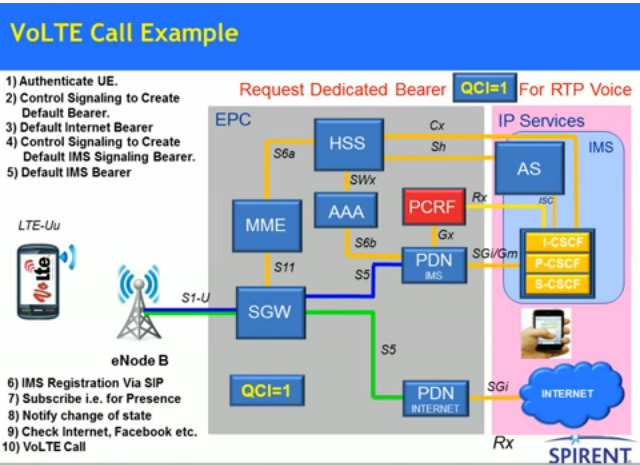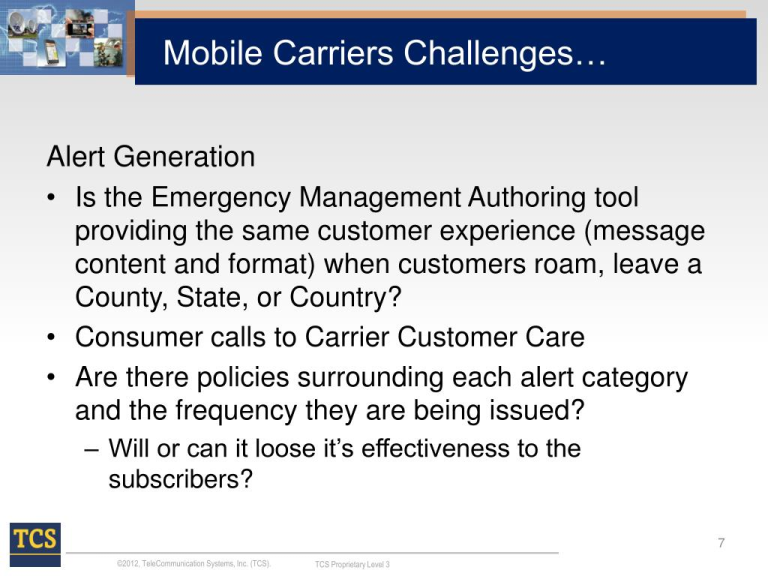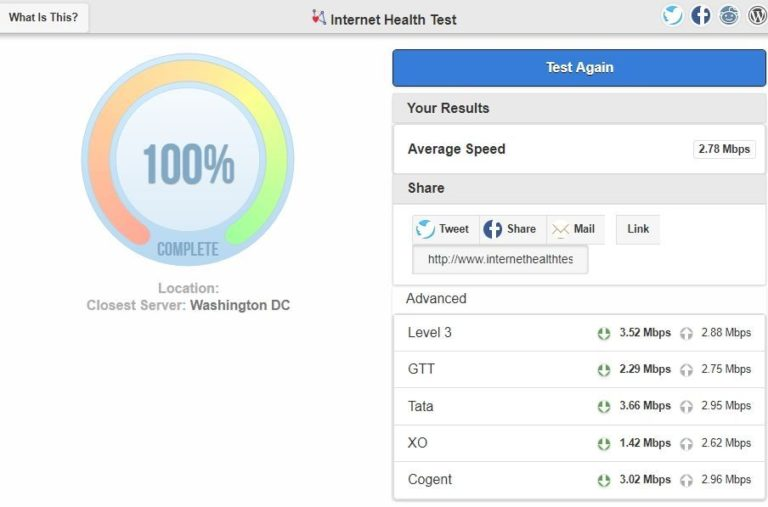
LTE Category M is redefining connectivity in the burgeoning Internet of Things (IoT) landscape, providing a specialized network framework aimed at low-power IoT devices. Recently, Sequans Communications has made headlines with the launch of its Monarch chip, touted as the very first solution for LTE Category M, specifically engineered to support devices like utility meters, industrial sensors, and wearables. This innovative chip allows these devices to function optimally on Category M networks, which are poised to revolutionize the connectivity paradigm for IoT applications. The unique demands of these devices require a network that prioritizes battery longevity over high-speed data transmission, making LTE Category M an ideal match. As the market for IoT devices continues to explode, the implications of sequencing these connections through low-power standards like Category M are profound, with predictions of nearly 1.5 billion connections by 2020.
The evolution of wireless technology to cater to the Internet of Things encompasses solutions like LTE Category M, a tailored standard that meets the requirements for low-energy consumption and extended battery life. By leveraging the advancements in semiconductor technology, particularly through solutions like Sequans’ Monarch chip, the future of connected devices hinges on providing robust, low-power connectivity suited for various applications. These category-specific networks are set to facilitate a new wave of smart utilities, wearable technology, and industrial sensors, placing emphasis on efficiency rather than speed. As we explore alternatives like narrowband IoT devices and low-power wide-area networks, the success of LTE Category M will significantly influence how industries manage their connected assets in the years to come. With the IoT landscape still evolving, the development and implementation of these tailored technologies may serve as catalysts for broader adoption and integration.
Understanding LTE Category M for IoT Devices
LTE Category M is specifically designed for low-power Internet of Things (IoT) devices that require efficient and extended connectivity without the high demands of traditional mobile networks. This technology, facilitated by Sequans Communications, aims to cater to applications such as utility meters and industrial sensors, which necessitate long battery life and reliable data transmission. By optimizing bandwidth usage and minimizing power consumption, LTE Category M can operate in environments for up to a decade without recharging, making it ideal for remote and widespread IoT applications.
As the IoT industry grows, the adoption of LTE Category M is expected to bridge the gap between traditional telecommunications and low-power IoT needs. Unlike standard LTE networks, which prioritize speed and data-heavy applications, LTE Category M is tailored for devices that mainly transmit short bursts of data. By leveraging the Monarch chip, these IoT devices can participate effectively within an ecosystem that demands lower power consumption while maintaining adequate operational efficiency, allowing industries to harness the full potential of connected devices.
The Role of Sequans Communications in IoT Evolution
Sequans Communications is at the forefront of developing innovative connectivity solutions for the IoT landscape. Their Monarch chip, which enables LTE Category M functionality, represents a critical advance in enabling low-power devices to become seamlessly integrated into existing mobile networks. This strategic innovation not only highlights Sequans’ commitment to leading the charge in LTE for IoT technologies but also empowers various sectors to evolve with smart solutions that can operate over cellular networks.
As the partnership with carriers like Verizon demonstrates, the implementation of Sequans’ LTE technology is poised to enhance the performance of IoT devices across the board. With the Monarch chip supporting both Category M1 and M2, industries will benefit from scalable network options that meet diverse operational needs—from health monitoring systems to asset tracking. By forging these carrier relationships and actively participating in the evolution of IoT connectivity standards, Sequans is paving the way for widespread adoption of low-power IoT solutions.
Market Potential for Low-Power IoT Solutions
The market potential for low-power IoT solutions is immense, with projections indicating up to 1.5 billion active connections by 2020. This surge in demand is fueled by the need for smarter technologies across multiple sectors, including utility management, healthcare, and smart cities. Companies recognize that traditional data transfer methods are insufficient in meeting the connectivity demands of power-sensitive devices, prompting the popularity of solutions like LTE Category M, which cater specifically to these needs.
With the advent of low-power wide-area networks (LPWANs) in conjunction with LTE Category M technology, businesses are well-positioned to enhance operational efficiency while significantly reducing costs. The key to success in this ecosystem lies in developing devices that can reliably transmit crucial data over extended periods without frequent maintenance or battery replacements. As industries continue to embrace IoT, the collaboration between technology providers like Sequans and enterprises will be essential in unlocking innovative use cases that leverage low-power connectivity.
Key Features of the Monarch Chip
The Monarch chip, introduced by Sequans Communications, is designed to accommodate the unique requirements of low-power IoT applications. With its dual-mode support for Category M1 and M2, the chip offers configurable data rates and power savings, allowing for upload speeds that are well-suited for devices primarily focused on transmitting rather than receiving data. This capability is crucial for applications like health monitoring and smart utilities, where continuous, reliable data streams are paramount.
Moreover, the Monarch chip integrates advanced power management technologies that contribute to the extended operational life of connected devices—up to 15 years on a single battery. This factor is particularly advantageous for remote sensors deployed in challenging environments, where changing batteries can be a logistical nightmare. By incorporating efficiency into its design, the Monarch chip not only enables seamless connectivity but also enhances the sustainability of IoT devices, making it a significant player in the low-power landscape.
Challenges and Opportunities in IoT Connectivity
While LTE Category M presents significant opportunities in the Internet of Things space, it is not without its challenges. As the market diversifies with various connectivity solutions like LPWANs from SigFox, Ingenu, and the LoRa Alliance, the competition intensifies, urging providers to demonstrate the advantages of their technologies. The key challenge will be to showcase the real-world performance reliability of Category M in various operational scenarios, especially in comparison to these emerging technologies.
Despite these challenges, the opportunity for LTE Category M to flourish is strong, particularly as the demand for IoT applications continues to rise in sectors such as smart cities and industrial automation. The collaboration between tech companies and network providers will be essential in defining the unique selling points of LTE Category M over its competitors. With continuous innovation and improved field performance, LTE Category M stands a chance to become a dominant player in the evolving IoT landscape.
Verizon’s Role in the Adoption of LTE Category M
Verizon’s strategic alliance with Sequans Communications in the development of LTE Category M is a vital step towards the wider adoption of low-power IoT technologies. As a major telecommunications provider, Verizon leverages its extensive network infrastructure to support the integration of these capabilities, ensuring that businesses have access to reliable and scalable solutions for their IoT applications. The collaboration builds on prior successes with LTE Category 1, showcasing Verizon’s commitment to expanding its IoT portfolio.
Through this partnership, Verizon can tap into the potential of low-power devices, offering clients solutions that not only reduce operational costs but also enhance performance in various applications. The availability of Monarch-enabled devices allows industries to explore innovative approaches to data collection and management, further solidifying Verizon’s position as a leader in IoT connectivity. This collaboration is crucial in helping enterprises transition from traditional technologies to more efficient, future-proof systems.
The Future of LTE Technologies in the IoT Ecosystem
As the IoT ecosystem continues to evolve, the future of LTE technologies like Category M looks promising. These advancements are anticipated to shape how connected devices communicate, leading to smarter, more efficient applications across sectors. With a growing demand for real-time data and seamless connectivity, LTE Category M’s low power requirements align perfectly with the goals of many industries aimed at sustainable practices and reduced operational costs.
Moving forward, the challenge lies in ensuring that the technology evolves to accommodate the increasing number of connected devices without compromising performance. Innovations in chip design, network management, and device integration will be pivotal. As more industries adopt LTE Category M solutions, we can expect a significant transformation in how businesses leverage IoT, paving the way for heightened operational efficiency and smarter resource management.
Integrating IoT Modules with Sequans Technology
The collaboration between Sequans and Gemalto to develop IoT modules equipped with the Monarch chip signifies a significant leap in the market for connected devices. These modules not only enhance the functionality of low-power IoT applications but also ensure they remain operational even when facing disconnections from LTE networks, reverting to 2G or 3G networks as necessary. This adaptability is crucial for maintaining consistent communication in environments where connectivity might fluctuate.
By integrating Sequans’ Monarch chip into their modules, Gemalto is set to streamline the development process for manufacturers, allowing them to focus on creating innovative applications rather than grappling with connectivity challenges. This partnership exemplifies the collaborative spirit necessary for driving IoT advancements, enabling developers to create solutions that meet the dynamic needs of industries focused on harnessing the power of low-power IoT technologies.
Evaluating the Performance of Category M in Real-World Applications
The true test of LTE Category M lies in its real-world performance. While the specifications provided by Sequans Communications indicate a reliable service for low-power IoT devices, the actual field performance will ultimately determine its success. Analysts have pointed out that while the theoretical advantages are clear, practical implementations must follow suit to build trust with businesses looking to adopt these technologies.
Through pilot programs and partnerships with major carriers like Verizon, the empirical data gathered will provide insights into the practical application of LTE Category M. As industries begin to integrate more low-power IoT devices into their operations, collecting and analyzing this performance data will be essential in refining the technology and enhancing its capabilities. This will not only solidify Category M’s place in the market but will also drive further innovations in low-power IoT solutions.
Frequently Asked Questions
What is LTE Category M and how is it relevant to IoT devices?
LTE Category M is a mobile communication standard tailored for low-power Internet of Things (IoT) devices, allowing for optimized data transmission with a focus on energy efficiency. Key features enable devices such as utility meters and industrial sensors to operate for extended periods on minimal power, making LTE Category M essential for the proliferation of low-power IoT solutions.
How does Sequans Communications contribute to the development of LTE Category M?
Sequans Communications has played a pivotal role in the advancement of LTE Category M by introducing the Monarch chip, which is designed specifically for low-power IoT devices. This chip supports both Category M1 and M2 standards, enabling optimized connectivity and power consumption for a variety of IoT applications.
What are the benefits of using LTE Category M for low-power IoT devices?
Utilizing LTE Category M for low-power IoT devices offers significant benefits, including longer battery life, reduced costs for connectivity, and the ability to support a vast number of devices over a wide area. With upload speeds tailored for IoT needs, LTE Category M enhances efficiency for applications such as asset tracking and home automation.
What are the differences between LTE Category M1 and M2?
LTE Category M1 supports higher upload speeds of 375 Kbps, making it suitable for applications requiring more frequent data transmission. In contrast, Category M2 is optimized for lower speeds of 55 Kbps, designed for ultra-low power consumption, allowing devices to operate efficiently while extending battery life.
Can existing IoT devices transition to LTE Category M networks?
Yes, existing IoT devices can transition to LTE Category M networks through software upgrades, as the standard is designed for compatibility with existing LTE infrastructure. This capability facilitates a smoother transition for carriers and developers looking to integrate low-power IoT solutions into their operations.
What types of applications can benefit from LTE Category M technology?
LTE Category M is ideal for a wide range of applications including utility meters, health monitors, wearables, industrial sensors, and home automation systems. Its low-power specifications allow these devices to operate efficiently while maintaining long battery life.
How does Verizon support the rollout of LTE Category M networks?
Verizon has partnered with Sequans Communications to develop and support LTE Category M networks, leveraging its existing infrastructure to integrate capabilities for low-power IoT devices. This collaboration aims to accelerate the deployment and adoption of LTE Category M technology in the IoT sector.
What is the projected impact of LTE Category M in the IoT market?
The introduction of LTE Category M is expected to have a significant impact on the IoT market, facilitating nearly 1.5 billion connections by 2020. By addressing the unique connectivity needs of low-power IoT devices, Category M is poised to enhance the scalability and functionality of IoT implementations across various industries.
How long can devices operating on LTE Category M last on battery?
Devices utilizing LTE Category M can achieve impressive battery life, often lasting between 10 to 15 years. This longevity is primarily due to the power management features integrated into the Monarch chip developed by Sequans Communications, making it especially suitable for remote IoT applications.
What role does Gemalto play in the LTE Category M ecosystem?
Gemalto collaborates with Sequans Communications to develop IoT device modules that leverage LTE Category M technology. This partnership enhances the functionality and security of low-power IoT solutions, providing modules that can seamlessly connect across various networks, including fallback options to 2G or 3G when necessary.
| Key Points |
|---|
| LTE is the leading technology for smartphone services, and is transitioning into the IoT space with LTE Category M. |
| Sequans Communications introduced the Monarch chip, the first chip designed for LTE Category M, tailored for low-power IoT devices. |
| IoT devices require slower, low-power connections with long battery life, differing from traditional smartphone connectivity. |
| The potential IoT market is significant, with predictions of 1.5 billion connections by 2020. |
| 3GPP is adapting LTE to support IoT, allowing carriers to upgrade networks for new IoT devices. |
| Sequans has partnered with Verizon to develop LTE Category M, building on previous collaborations. |
| The Monarch chip supports two versions of LTE Category M: M1 with 375 Kbps and M2 with 55 Kbps upload speeds. |
| M1 and M2 are expected to facilitate various IoT applications like health monitors and home automation systems. |
| Gemalto is working with Sequans to create enhanced IoT device modules that include fallback capabilities to 2G or 3G. |
Summary
LTE Category M represents a significant advancement in network technology tailored for IoT devices. As the need for low-power, long-lasting connectivity solutions for applications like utility meters and health monitors continues to grow, LTE Category M is set to play a pivotal role in this evolving landscape. The launch of the Monarch chip by Sequans, alongside strategic partnerships with major carriers like Verizon, positions LTE Category M to compete effectively with existing IoT network alternatives, ensuring it meets the specific needs of the connected world.


